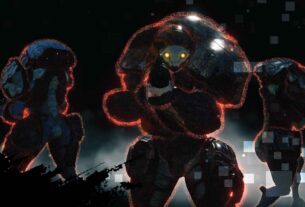(or How I Learned To Stop Worrying And Love The Bots)

A surprise win for Best Drama at the Golden Globes propelled the WWI action film “1917” to the top of the box office for a few weeks, and in my mind underscored that the so-called “Great War” is still waiting to be discovered by the world at large. In the realm of large-scale conflicts, WWI remains a relatively untouched subject in a genre brimming with blood-drenched hero tales (Stanley Kubrick’s “Paths of Glory” and Peter Weir’s “Gallipoli” are notable exceptions).
And this makes sense, because the whole thing started over a small-scale terrorist attack and ended years later with a lot of dead people and the whole world worse off for the experience. Who would want to remember that? Indeed, it was called “The War To End All Wars” only until another, bigger war came along and blew that title out of the water.
And—perhaps more importantly for posterity’s sake—that “second” “world” “war” was a bit more easy to justify as it involved death camps and unprovoked military attacks on one side, making it easier to morally judge the opposing forces (hint: the good guys won). The damned Nazis even wore black uniforms with little skull pins on their chests. This was a war made for Hollywood.
While “1917″ is very much a Hollywood movie in terms of plot, it also introduces us to perhaps the primary takeaway from WWI: it was a horrible, traumatic slog through endless mud pits, explosions and rotting corpses for the soldiers that fought it. And the utter pointlessness of its origin mean there are no real good guys and bad guys. The common soldier on both sides was just a victim of irrational political machinations taking place far from the battlefield.
And that’s where Blackmill Games’ WWI trench simulator Verdun comes in. Featuring painstaking realism, action-packed gameplay and solid physics, Verdun does an amazing job of conveying the senseless carnage and staggering loss of life that have come to define WWI. In doing so, Verdun has made itself unique in the war game genre. This is no armchair general’s fever dream.

There are no vehicles to speak of; airplanes passively fly over the battlefield and cannot be controlled or shot down. The only tanks you will encounter are immobile fixtures of the terrain. Verdun goes for the more realistic experience of mere men armed only with the weapons they can carry, slugging it out across a nightmare landscape for an arbitrary scrap of land. There is no higher cause—there are only pawns on this chessboard.
Like its namesake battle, Verdun takes place in the stagnant line of trenches stretching north-south across Belgium and France known as the Western Front. Some maps represent the early war, unfolding across grass-covered hills and pristine farmlands, while others invoke the ubiquitous sandbag trenches of the later war years littered with broken crates and bloody fragments of former soldiers.
Listen to the gurgling screams of soldiers choking to death in a phosgene gas cloud. Feel your ears ring from the blast of a nearby grenade. Watch the oncoming flood of shadowy figures creep ever closer across no-man’s land. Lunge forward and club the enemy with your shovel when you run out of bullets. This is the WWI experience, and be glad that it’s only a game for you.

Players choose a role among squads of German, U.S., British, French, Belgian and colonial forces, and attempt to capture or defend a series of trenches. Overall points earned for capturing trenches decide the winning side of each match, while individual players accrue points that increase their rank and strengthen their squad role with special abilities.
Additionally, the combined ranks of each member contribute to the squad’s rank, giving a collective boost to players’ powers. Friends also increase the squad’s rank every time they play together. At the end of each match players may also be awarded gold, silver or bronze medals and additional points for achievements, such as having the most kills of the game or squad, or spending the most time in the enemy’s trench.
Each squad is comprised of four roles: an officer who assigns objectives and provides cover for the squad by calling in artillery, smoke bombs or gas attacks, or a recon flyover that reveals enemy locations. A rifleman, marksman or flanker supports the officer and advances the squad. A close-action attacker is armed with machine guns, shotguns, grenades and pistols to hold the trenches against incoming waves of enemies.

The final role is a grenadier armed with a number of grenades, or a “specialist” with a melee weapon, bomb and even a flamethrower to root out stubborn opposition. The level of the squad is reflected by the members’ uniforms, which change from early to late-war as it ranks up.
The primary gameplay, called “Frontlines”, involves two teams of 32 players each battling to capture the most trenches before time runs out, or to drive the enemy back to their last trench. Attacking squads will have to cross no-man’s land—laced with craters and barbed wire—while they are subject to enemy fire, and must occupy the trench and drive out the enemy before running out of time or sustaining too many losses.
If an attack loses momentum, the attacking force has a number of seconds to return to the jump-off trench before they are “executed for desertion.” Similarly, spending too much time outside the designated zones will result in a traitor’s death. When players die, they respawn in the jump-off trench or on a teammate if their squad type allows it. One rifle shot is usually enough to kill, and non-lethal injuries heal after a few seconds.

There are no medic kits, resupplies or power-ups. In fact, there are no purchasable skins, in-game currency or microtransactions whatsoever. You get what you pay for: a pretty well-balanced, realistic FPS trench-warfare simulator.
But it wasn’t always this way. Verdun debuted five years ago with just a handful of squad types and maps. Gameplay was also quite buggy and limited, and the graphics were a bit simple (I know; I was there). While there would be a spike in numbers during peak hours, quite often late-night matches would devolve into a couple players on either side trying to locate each other hiding among the vast network of trenches.
Over the ensuing years, Blackmill continued to upgrade the game with new squads types, weapons and play modes. Even after releasing the Eastern Front companion game Tannenberg in 2017, Blackmill has continued to support Verdun. The addition of French Senegalese troops adds a refreshing (and historically accurate) amount of diversity to an otherwise lacking genre.

Most recently, and by what appears to be high demand from players, developers added AI bots to the game as a new co-op game mode, and in Frontlines to fill out squads that lacked the full complement of players. Suddenly matches feel much more populated—which is good—but I admit to having mixed feelings particularly about the inclusion of bots in Frontlines.
For instance, it was particularly disappointing to experience the joy of completely dominating a match, only to discover that I was the only human being playing! At first I thought that I was just playing against a bunch of noobs, until I realized that they all had the same avatars and mundane names that match the ethnic background of their squads. It was kind of creepy to have it finally dawn on me that I was playing bots.
More recently I played a match in which there was only one or two humans per squad, and it really became a matter of tracking down the other humans among the cannon-fodder bots. It was a bit more satisfying when the occasional human player was felled by my bullet or machete. Of course, it would be ideal to have every match entirely comprised of human players, which brings me back to that point I put off before.

It should stand to reason that the success of a squad-based PvP game is entirely dependent on the strength of it’s player base, yet Blackmill has apparently done little to foster a community among Verdun’s players. For a game that is so obviously a labor of love for the developers, you would hope that they would be eager to pass on that passion in blog posts and interactions on message boards. Unfortunately, there is scant material that has been put out since the games inception.
With no tutorial, save for a brief overview before the first match, new players are left to discover the game pretty much through experience alone. Player guides appear hastily compiled. Verdun’s Steam page discussions and subreddit show that these organic communities struggle to figure out changes that developers make to the game. Honestly, at this point one well-coordinated squad can dominate every match, if four players were inclined to do so. I don’t see much evidence for that (but hit me up!).
It may be that the Netherlands-based game studio focused on a different market, or is putting its resources into a new game, which would be a shame because with Verdun they have created the best WWI war sim on the market. Next to Verdun, EA’s better-known “Battlefield 1” is a costume fantasy stretched over an anachronistic game structure, fraught with the kind of microtransactions and premium memberships that most gamers have come to resent (particularly after paying for the game outright, EA).
This may even account for how little we see from Blackmill—without that endless flow of cash from players, there is little incentive for developers to commit resources to the game. But the developers of Verdun have shown a dedication to improving the game over time, and I think that a bit of promotion would go a long way. “1917” may prove a bellwether for WWI history, and if so Verdun has come of age at just the right time.
(Thanks for reading! You can also see the video review here.)



